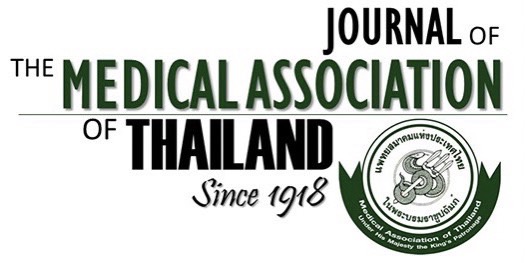The THAI Anesthesia Incident Monitoring Study (Thai AIMS): Perioperative Arrhythmia
Pornswan Ngamprasertwong MD*, Inthiporn Kositanurit MD**, Preechayuth Yokanit MD***, Surunchana Lerdsirisopon MD*, Aksorn Pulnitiporn MD****, Sireeluck Klanarong MD*****
Affiliation : * Department of Anesthesiology, Faculty of Medicine, Chulalongkorn University, Bangkok, Thailand ** Department of Anesthesiology, Faculty of Medicine, Naresuan University, Phitsanulok, Thailand *** Department of Anesthesiology, Faculty of Medicine, Phramongkutklao College of Medicine, Bangkok, Thailand **** Department of Anesthesiology, Faculty of Medicine, Khon Kaen Regional Hospital, Khon Kaen, Thailand ***** Department of Anesthesiology, Faculty of Medicine, Buddhachinaraj Regional Hospital, Phitsanulok, Thailand
Background : The Royal College of Anesthesiologists of Thailand organized the first national sentinel
incident reports of anesthesia related adverse events in 2007 on an anonymous and voluntary basis. The aims
of the present study were to analyze incidence, risk factors, clinical course and outcome of perioperative
arrhythmia and indicate the contributing factors and suggested corrective strategies in the database of the
Thai Anesthesia Incidents Monitoring Study (Thai AIMS).
Material and Method: This study was a prospective descriptive multicentered study conducted between
January 2007 and June 2007. Data was collected from 51 hospitals across Thailand. All cases whose arrhythmia
was detected intra-operatively and within 24 hr postoperative period were analyzed by 3 independents
anesthesiologists. Any disagreements were discussed to achieve a consensus.
Results : Four hundred and eighty-nine cases were enrolled as relevant arrhythmia cases. Bradycardia
was the most common type (434 cases; 88.8%). Most of all events occurred intra-operatively (94.7%) and
electrocardiography was the most common firstly detected monitoring equipment (95.5%). Arrhythmia
occurred frequently in patients with hypertension and pre-operative heart rate < 60 beat per min. Intravenous
anesthetics, central neural blockage and vagal reflex were considered to be the 3 most common suspected
causes of arrhythmia requiring treatment. Most common outcomes were minor physiologic change with
complete recovery physiologic change with complete recovery while 7% of incidents developed fatal outcome.
The most common contributing factor was human factor (72.4%) especially in experience. An experienced
anesthetic team with high awareness could be the minimizing factors.
Conclusion : Arrhythmia accounted for 19.2% of 2,537 incidents of the Thai AIMS database. Bradycardia was
the most common type of cardiac arrhythmia. Most arrhythmia was benign but might be fatal. Suggested
corrective strategies such as guidelines practice, improvement of supervision and quality assurance activity.
Keywords : Anesthesia, Adverse events, Arrhythmia, bradycardia, Multicentered study, Complication



